 This is a time of transition for materials handling
This is a time of transition for materials handlingEve White examines current trends in motive power and the ways that manufacturers are both adapting existing technology and developing new technology that meets the new environmental standards.
Materials handling, like most economic activity, is under pressure to reduce its environmental impact and the sector is addressing its contribution to global warming in a variety of ways. However, one common area of concern - and action - among forklift manufacturers is the impact of engine emissions.
Emissions for offroad vehicles are now regulated by the Tier 4 standards in the US and Stage V standards in the EU. These standards were phased in over several years and have been in full effect since 2015 in the US and 2019 in Europe. They regulate the amount of particulate matter (PM), or black soot, and the nitrogen oxides (NOx), hydrocarbons (HC) and carbon monoxide (CO) that can be emitted from off-highway engines.
Manufacturers have been responding to the legislation in two ways: by making changes to machines powered by internal combustion engines (ICEs) to reduce emissions, and by using alternative power sources, including batteries and hydrogen.
Recent years have seen huge technological advances in the areas of electric- and hydrogen fuel cell-powered equipment, and it seems likely that in coming decades, this is where the market will head. But diesel engines are still around for now – and manufacturers have found many ways of reducing the emissions of equipment powered by ICEs.
Modifications to ICE equipment
There are three main ways that emissions can be lowered in internal combustion equipment:
- by making the engine more efficient and using exhaust after-treatment technologies;
- by making other modifications to the equipment to improve fuel-efficiency – for example, by designing lighter-weight machines and more efficient air conditioning systems;
- by using alternative fuels in ICE engines.
Manufacturers have made huge strides in reducing emissions from ICE vehicles, typically by making multiple changes that encompass two or more of these areas.
More efficient engines and exhaust after-treatment
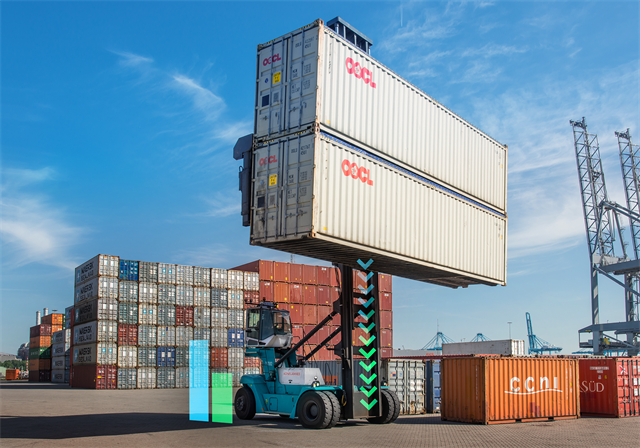 A Konecranes container handler
A Konecranes container handler
Manufacturers such as Konecranes are coming up with innovative ways to reduce fuel consumption. As part of Konecranes’ ‘Ecolifting’ solutions, the company has been improving the engine efficiency of all its models, including reachstackers, forklifts and container handlers.
The changes, which include a new hydraulic system configuration and customised pump set-up, together with an optimised driveline, and a new transmission design with a lock-up function, deliver the same power with 15 to 25% less fuel.
While the emissions from these engines obviously remain higher than emissions from electric vehicles, this is nevertheless a significant reduction, and according to Konecranes, the most cost-effective way to start reducing emissions and fuel expenses.
While technology has made it possible to greatly reduce fuel consumption in combustion engines, these improvements alone are not enough to ensure equipment meets the stringent Stage V and Tier 4 requirements. Exhaust after-treatment systems also need to be used with diesel engines, in particular. These include selective catalytic reductions, which work by combining exhaust gases with ammonia and passing this over a catalyst; exhaust gas reticulation, which involves recirculating a small amount of cooled exhaust gas back into the combustion chamber; and diesel particulate filters - mechanical filters that trap soot particles after they have been partially oxidized by a catalyst.
Biofuels. Some companies are reporting encouraging results with biofuels in combustion engines. Konecranes has developed HVO100, a 100% renewable and fossil-free chemical copy of regular diesel made mostly of vegetable oils combined with waste and residue fat, a recipe that can reduce fossil-based CO2 emissions by up to 90%. Almost the same as regular diesel, renewable HVO100 can be used in most diesel engines without further modification.
In 2020, Konecranes started testing HVO100 in selected forklifts at its Markaryd factory in southern Sweden and found that the fuel works as efficiently as regular diesel in the new equipment, with no engine modifications needed. This means that HVO100 can be used in all Generation C trucks, the latest Konecranes models available on the market, representing around 40% of the company’s fleet operating globally.
Currently, almost 100% of the Konecranes machines produced in Markaryd run on this fuel. Konecranes estimates that the reduction in tailpipe CO2 emissions from HVO100-fueled trucks both produced and used by Konecranes will be over 270 T per year – equivalent to 100 passenger cars driving 15,000 km annually.
Other innovative solutions
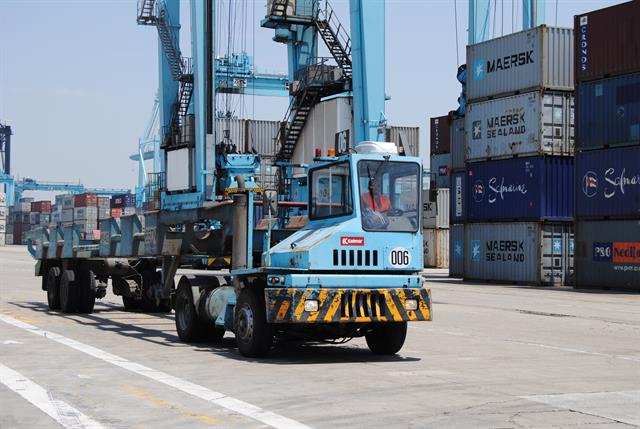 SNDC's Stop & Comfort system can save up to 30% of emissions
SNDC's Stop & Comfort system can save up to 30% of emissions
Other innovative design and technology solutions don’t directly address the engine or exhaust gases but contribute in other ways to making the machine more efficient and thus lowering emissions.
Lighter-weight machines use less fuel, but for safety reasons, getting the centre of gravity right is crucial. Bi Sheng from Heli says, “Our light-weighting technology is currently being applied to 1 to 5 T vehicles. By optimising the centre of gravity, we can ensure the stability of the vehicle while reducing the overall weight, lowering the vehicle's energy consumption for travel, improving the overall vehicle range and being more environmentally friendly.”
Other companies are working on reducing emissions in ICE vehicles through innovative air conditioning technology. French company SNDC, which specialises in electric air conditioning units, offers immediate solutions that can be implemented in ICE equipment to reduce emissions.
David Massat, sales director OEM and export, explains: “During loading and unloading operations, the driver often keeps the engine on for thermal comfort inside the cabin. Our Stop & Comfort system, which is directly connected to the batteries of the vehicle, allows the driver to benefit from the same thermal comfort when the engine is off.
“For terminal tractors, we estimate that the loading and unloading time covers roughly 30% of the activity of the machine. With our solution in place in addition to the original aircon system, drivers can turn the engine off but still stay cool; this results in a 30% reduction in emissions.”
Alternative fuels
While modifications to ICE engines might tide us over for a while, the writing is clearly on the wall for this motive power source. From 2030, it will be illegal to buy and sell new petrol and diesel vehicles in the UK and France, and other countries are likely to follow suit. Many manufacturers are focusing on battery and fuel cell technology as a way forward.
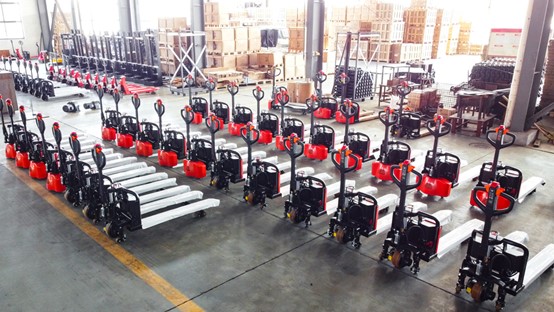 Reddot equipment now uses lithium-ion batteries instead of lead-acid batteries
Reddot equipment now uses lithium-ion batteries instead of lead-acid batteries
Batteries. Traditionally, electric forklifts have been considered ideal for indoor use but not for heavy-duty or outdoor use, owing to their lower torque output compared with ICE models and their poor ability to cope with rough terrain outdoors. Other disadvantages have been the charging time required and the higher initial outlay. But with recent advances in technology, manufacturers say, this is changing.
Lithium-ion batteries have largely taken over from lead-acid batteries and, according to Nancy Liao, operations specialist from Chinese company Reddot, have become the mainstream technology for energy storage in the materials handling industry. “Compared with traditional lead-acid batteries, nickel-cadmium batteries and even nickel-hydrogen batteries that cause environmental pollution problems, lithium-ion batteries do not contain harmful elements,” Liao says.
Lithium-ion batteries have other advantages too, explains Heli’s Sheng. “Our whole series of electric products can be equipped with lithium-ion batteries, which are about 30% more energy efficient than lead-acid batteries.”
In the past, diesel-powered equipment was considered the best option for heavier-duty jobs, but the lifting capacity of electric equipment is increasing, with one of Heli’s recent innovations being a 25 T hybrid lithium-ion supercapacitor container stacker – the first of its kind for China – and similar progress being made with forklifts.
"If we look over the global trend, we can clearly see a growing use of lithium batteries, high voltage machines and bigger and bigger forklifts that help the customer to go electric."
Tobias Ingemarsson, CEO of Swedish company Semax, notes that technology can extend the capacity of electric forklifts without adding emissions. “We have produced electric forklifts up to 15 T since 2003 and we have learned many things on the way.
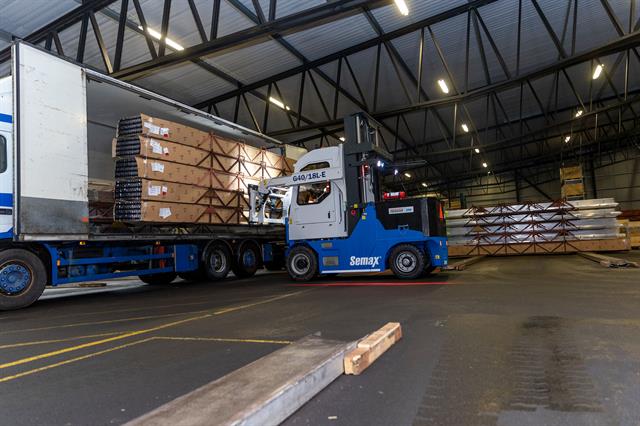 A Semax lithium-ion forklift in action
A Semax lithium-ion forklift in action
Ingemarsson cites his company’s "extension", a heavy-duty bolt-on attachment that fits over the existing forks to extend the reach. “By doing this, the driver doesn’t need to move the forklift – only the arm system. The result is reduced electricity consumption as only the pump motors need to be used to make the final adjustments during loading and unloading.
“With our electric drive line together with our in-built extension, we can reduce the environmental impact to almost zero,” he explains.
While some customers might be hesitant about adopting electric heavy-duty forklifts, which are relatively new to the market, manufacturers are keen to highlight the advances in this area. George Zhang, deputy general manager of Chinese manufacturing company Hangcha, says: “Our lithium-ion powered forklifts can deliver the performance of an ICE truck in terms of productivity and efficiency, alongside benefits from reduced noise levels, zero emissions and a low total cost of ownership.”
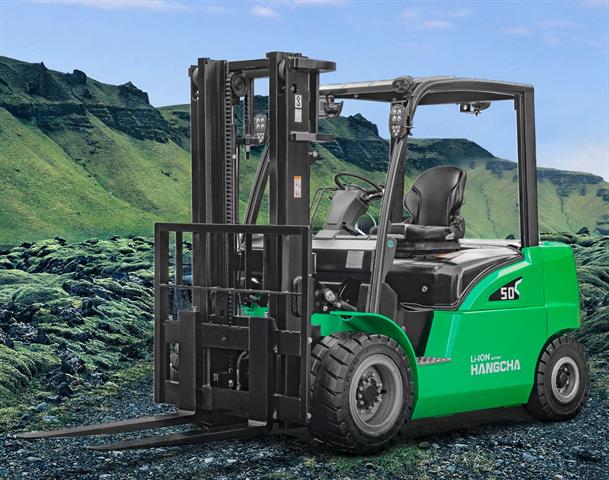 A Hangcha lithium-ion forklift
A Hangcha lithium-ion forklift
Manufacturers are also taking steps to make the transition as easy as possible for customers, developing batteries that require less charging time, and coming up with innovative business models. New lithium-ion battery technology for use in bigger forklifts enables the batteries to be charged quickly – for example, Konecranes’ batteries take only 45 minutes for a full charge, which gives four to six hours of operation.
In addition, some companies are experimenting with new business models to make the transition to electric equipment easier for customers. In December last year, Konecranes launched Battery as a Service (BaaS) to provide chargeable, upgradable and remotely monitorable lithium-ion batteries to customers.
One drawback of lithium-ion batteries is that unlike lead-acid batteries, recycling is challenging. Progress is being made in this area, but in 2020 less than 5% of lithium-ion battery waste was recycled in Europe and the US, compared with 98% of lead-acid battery waste.
Fuel cells. Hydrogen fuel cells are a relatively new technology that is likely to have a place in the materials handling industry in the future. Hydrogen fuel cells produce clean energy with only water and heat as by-products, can be charged much faster than a lithium-ion battery, and operate well in cool conditions. At this stage, challenges remain regarding storage, distribution and production of hydrogen, and companies with smaller fleets may not be able to invest in the required infrastructure.
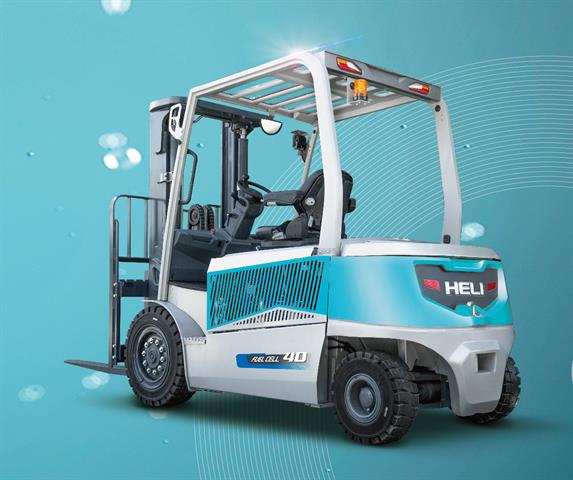 Heli's hydrogen fuel cell forklift
Heli's hydrogen fuel cell forklift
However, Chinese companies Heli and Hangcha are powering ahead with development in this area. Heli is currently selling 2 to 3.5 T hydrogen-powered forklifts in small batches. Hangcha has been researching hydrogen fuel cell technology in forklifts since 2016, and successfully launched two series of hydrogen fuel cell forklifts in 2019. “Our trucks can deliver the performance of an ICE truck in terms of productivity and efficiency, alongside benefits from reduced noise levels, zero emissions and a low total cost of ownership,” Zhang says.
What does the future hold?
Semax’s Ingemarsson believes the future is in lithium-ion batteries. “If we look over the global trend, we can clearly see a growing use of lithium batteries, high voltage machines and bigger and bigger forklifts that help the customer to go electric.
“We are working hard to implement new electric forklifts to the paper and steel industry in Europe and we can see a much more open-minded approach to actually taking this step.”
Hydrogen fuel cell technology is a strong focus for some companies, and is in the race, but it still has some way to go to compete with lithium-ion batteries.
One thing is for sure: this is a time of transition for the industry, with new and improved ICE machines still operating while new technologies are being developed at a rapid pace. As summed up by Jeffrey Stokes, director product management, Konecranes Lift Trucks: “It’s clear that the next decade will see a significant shift in many aspects of our business and market, to which new innovative ideas combined with new technologies will be a key enabler.”
For this report we interviewed the following industry specialists:
All mentioned solutions can also be seen in this dedicated Virtual Showroom